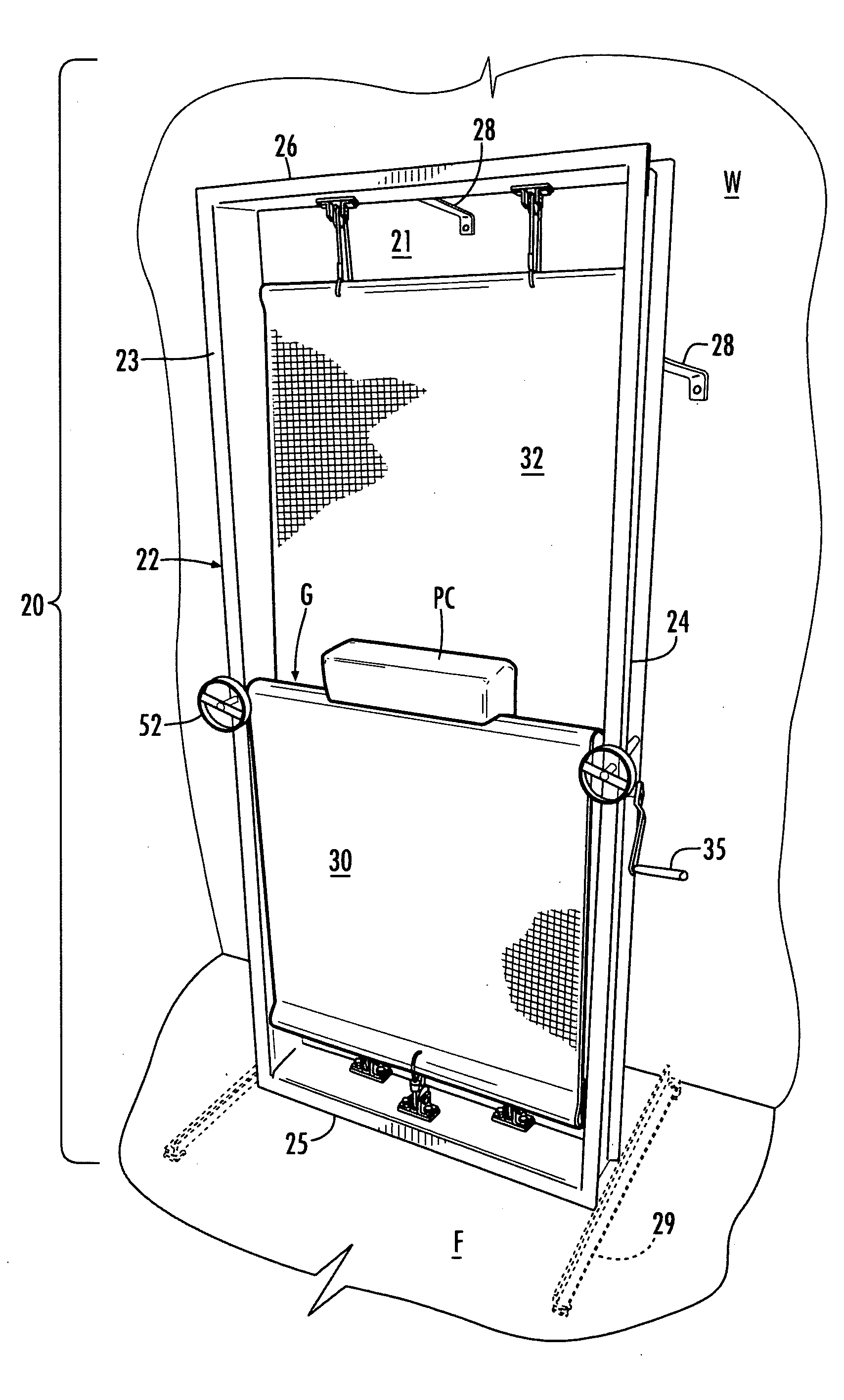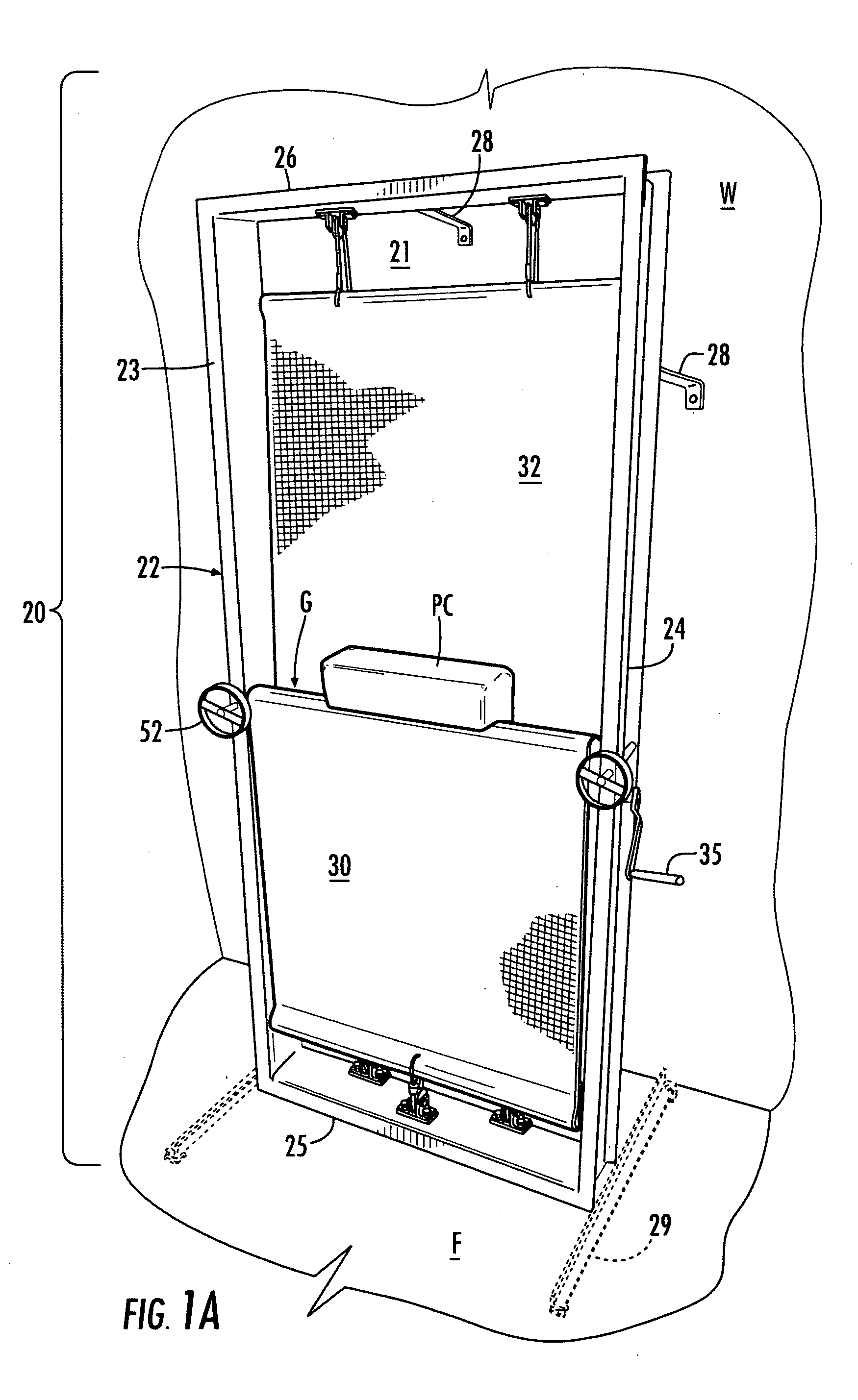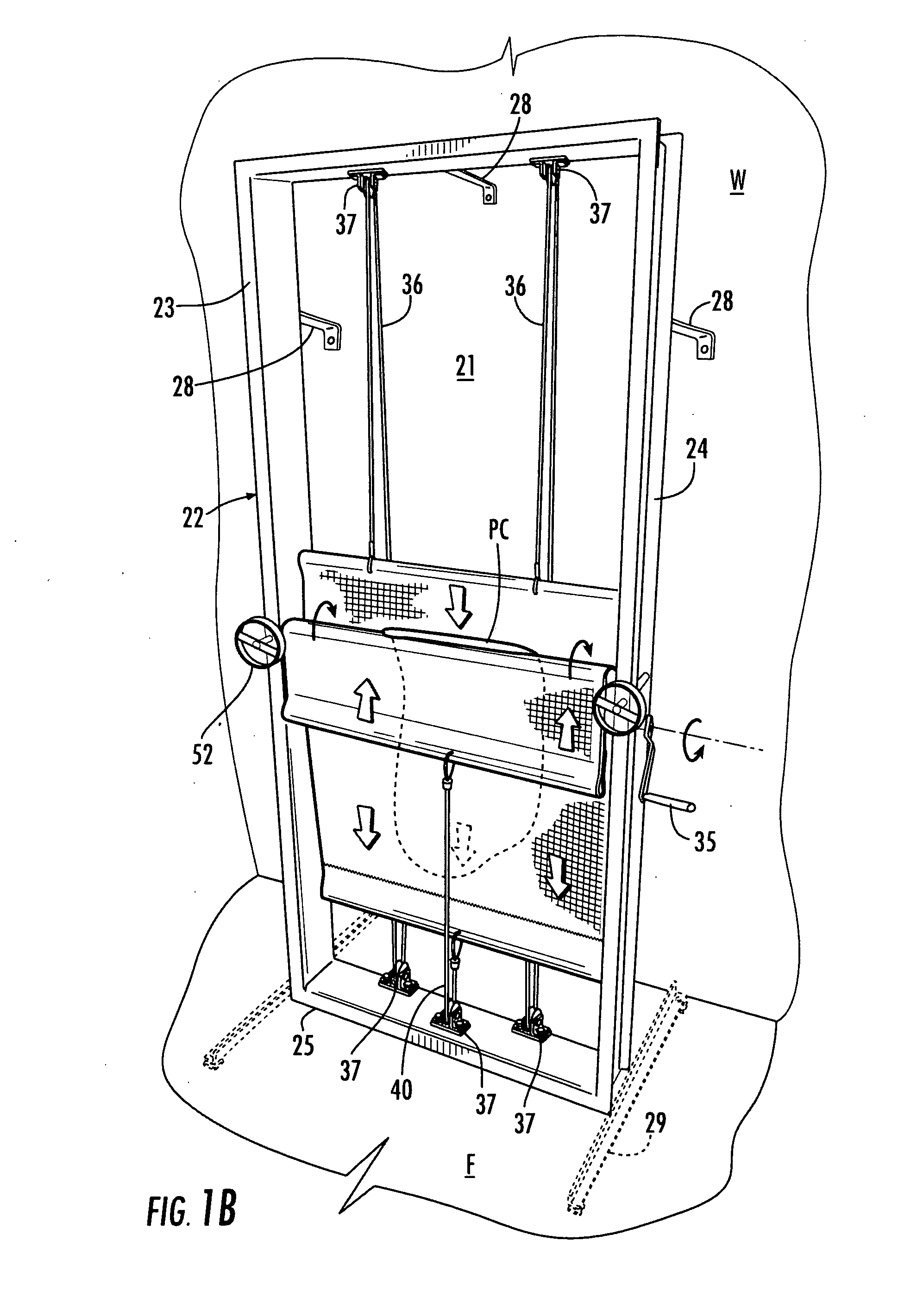Apparatus and method for forming a clay slab
a technology of clay slabs and apparatus, applied in the field of apparatus and methods for forming clay slabs, can solve the problems of substantial floor space, limited use of most pottery, sculpture and artwork workshops, and limited use of most clay-making, sculpture and artwork
- Summary
- Abstract
- Description
- Claims
- Application Information
AI Technical Summary
Benefits of technology
Problems solved by technology
Method used
Image
Examples
Embodiment Construction
[0056]Referring now to the accompanying drawing figures in which identical reference numerals denote the same or similar elements throughout the various views, an apparatus for forming a clay slab according to the invention is shown. The apparatus, also referred to herein as the “slab roller” and indicated generally at 20, is operable for working prepared clay to form a relatively flat clay slab having a generally uniform thickness of the type used for making clay pottery, sculpture and artwork. The apparatus comprises a frame 22 oriented in a vertical direction relative to a horizontal floor F and a vertical wall W (or other support) of a work space in, for example, a pottery shop or art studio. As shown, the frame 22 includes a pair of spaced apart side frame members 23, 24 separated by a lower frame member 25 adjacent the floor F and an upper frame member 26 vertically spaced from the lower frame member. Each of the frame members 23, 24, 25, 26 is preferably made of metal and for...
PUM
| Property | Measurement | Unit |
|---|---|---|
| Length | aaaaa | aaaaa |
| Thickness | aaaaa | aaaaa |
| Pressure | aaaaa | aaaaa |
Abstract
Description
Claims
Application Information
 Login to View More
Login to View More - R&D
- Intellectual Property
- Life Sciences
- Materials
- Tech Scout
- Unparalleled Data Quality
- Higher Quality Content
- 60% Fewer Hallucinations
Browse by: Latest US Patents, China's latest patents, Technical Efficacy Thesaurus, Application Domain, Technology Topic, Popular Technical Reports.
© 2025 PatSnap. All rights reserved.Legal|Privacy policy|Modern Slavery Act Transparency Statement|Sitemap|About US| Contact US: help@patsnap.com



